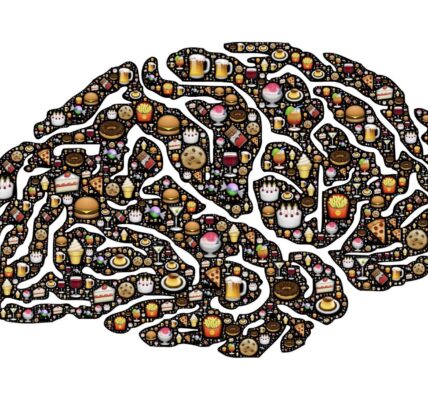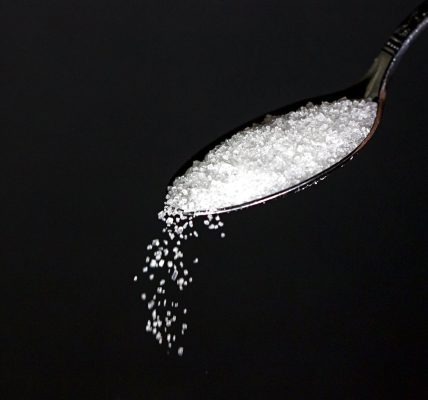More About the Unwanted Inheritance

It seems that quite a few humans come into the world with a type of generational wealth they did not ask for, and which may turn out to be a curse. Trauma bequeathed to us by our parents and their ancestors may show up in the form of chemical interactions that affect the expression (or lack of it) of our very genes. For better or worse, methylation and other processes can turn a gene off or on.
This epigenetic activity dictates whether a gene does or does not perform a function of which it is capable. It’s like, while everybody may have feet, a force we can’t see or control decides whether to give us roller skates… or to withhold them. This sort of meddling can determine, among many other possible outcomes, how vulnerable we are to becoming addicted to some substance. According to Genetic Engineering & Biotechnology News (GEN),
In general, anthropometric traits, psychiatric diseases, and traits related to intelligence, cognitive ability, and educational attainment were found to be most polygenic, each involving >10,000 underlying susceptibility SNPs.
SNPs are single nucleotide polymorphisms, and we need to now a lot more about them because they matter — as do the foods your mother ate while pregnant, and her use of tobacco, alcohol, and recreational drugs, and the level of stress in her life — along with what you eat, and smoke and ingest, and how much aggravation you encounter daily.
Everything matters, everything counts. The latest research confirms that epigenetic changes are involved in substance use disorders, and a great deal more besides, and when the full truth comes out, it would not be surprising to find them accountable for most of what we characterize as addiction.
Jamie Durrani, senior science correspondent at Chemistry World, assures us that if we hope to design drugs that interfere with dopamine regulation, we had better know what we are doing, because that neurotransmitter is involved in myriad biological processes. Contrary to the simple beliefs of the layman, dopamine is not a pleasure/reward molecule but a molecule that “helps us learn really important information.”
Researchers with a great interest in “how addiction affects gene expression in cells” state that epigenetic changes in the brain affect drug-seeking behaviors. There is also curiosity and concern about the reciprocal question of how the gene expression in cells affects addiction. Durrani writes,
In the case of addiction, it is believed that long-lasting epigenetic changes to the activity of certain genes, and thus the expression of many proteins, helps to drive drug-seeking behavior — offering an explanation for why users might still feel strong cravings for a drug many weeks, months or even years after the last time they took it.
To have lingering cravings hang around is definitely undesirable. This is why the relapse rate is so high. We need them to go away and not bother us. So, what might stymie the unfortunate tendency to retain, and entertain, those cravings?
Neuroscientist Eric Nestler has looked into this, and found that all drugs of abuse, despite their very different initial effects, have a common trait. With repeated use, they all produce “some of the same chronic changes in the brain.” This is because of “a transcription factor known as ΔFosB,” a protein that gets stuck in the brain’s nucleus accumbens and lingers for a long time:
The build-up of this protein triggers a whole cascade of downstream molecular signals that seem to play crucial roles in addiction… So that was an important finding: there is something common to all of these drugs.
Then Creb, another transcription factor, is also activated by both uppers and downers. ΔFosB makes you feel good; Creb makes you not feel bad, so you’ve got the positive and negative reinforcement going on at the same time, an irresistible combination. But that’s not all. It gets much, much more complicated, bringing in another substance known as Rheb, and working with this stuff in mice brains has proven the long-held suspicion that drugs “hijack the natural reward circuits in the brain.”
Using Crispr tools, scientists have figured out how to turn on 16 essential regulator genes that change thousands of other genes. They then learned to activate those genes in rats, which artificially increases their sensitization to cocaine and makes them act like veteran coke fiends. All this leads to new knowledge about protein splicing, a “crucial factor in how the brain responds to stimuli of all kinds.”
These discoveries may also imply some things about therapy, which perhaps does not need to be long-term. The experienced addict recognizes a craving when one comes along, and hopefully will have an antidote ready at hand.
An interesting aspect of this whole matter is that the brain appears to be quite open-minded about which particular drug it gets hooked on. Uppers, downers, whatever — all recreational drugs cause ΔFosB to accumulate in a certain area of the brain, and influence a person to seek pleasure, while Creb encourages them to avoid pain. Then, Rheb persuades the brain’s owner to shun “essential health-related activities” and seek drugs instead. All substance use disorders involve both euphoria and anxiety avoidance.
The experienced abstinent person may have more than one trick up their sleeve. Instead of going back to the addictive substance or behavior, they might instead offer herself a euphoria prize, like a spa week. Or they might award himself, at the very least, an anxiety-avoiding experience.
For instance: Make a self-agreement to start going to meetings again, at least until the crisis blows over. Or to enlist, before straying, the aid of an online therapist for six sessions, and see how it goes. There may be as many avoidance mechanisms as there are recovering addicts, and in this instance, avoidance is a virtue.
Written by Pat Hartman. First published April 4, 2025.
Sources:
“Study Finds Genetic Basis of Common Diseases May Span Tens of Thousands of SNPs,” Genetic Engineering & Biotechnology News, August 14, 2018.
“Epigenetics,” ClevelandClinic.org, undated.
“The Proteins that Drive Drug Addiction,” Chemistry World, June 24, 2024.
Image Copyright: Petra Šolajová/Pixabay.




